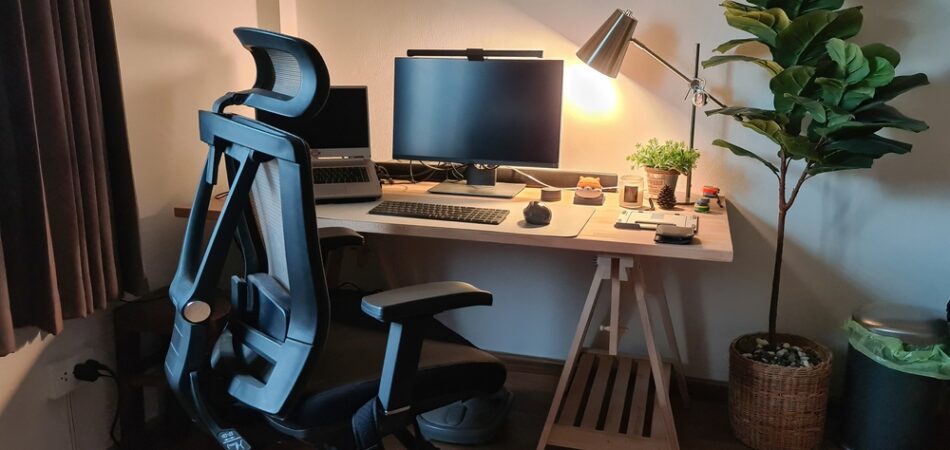
The significance of ergonomics in small office furniture design cannot be overstated. As more individuals embrace remote work or opt for compact office spaces, the demand for furniture that promotes comfort, productivity, and health has surged. Ergonomics plays a pivotal role in shaping these designs, ensuring that they cater to the specific needs and well-being of individuals who spend extended hours at their desks. This blog explores the fundamental principles of ergonomics in small office furniture design and why it matters in creating a conducive work environment.
What is Ergonomics?
Ergonomics, derived from the Greek words “ergon” (work) and “nomos” (laws), focuses on designing environments and products to enhance human well-being and overall performance. In the context of office furniture, ergonomic design aims to minimize discomfort and reduce the risk of musculoskeletal disorders (MSDs) by adapting furniture to the natural human body mechanics and movements.
Principles of Ergonomic Design
Effective ergonomic furniture design incorporates several key principles:
- Adjustability: Furniture should be adjustable to accommodate different body types and preferences. This includes height-adjustable desks, chairs with adjustable seat depth and lumbar support, and monitor arms that allow for flexible screen positioning.
- Support: Proper support for the spine, neck, and limbs is crucial. Ergonomic chairs should provide adequate lumbar support and encourage a neutral sitting posture, while desks should support wrists and forearms at a comfortable height.
- Comfort: Ergonomic furniture should promote comfort during prolonged use. This involves using materials that are supportive yet cushioning, ensuring adequate padding where needed, and considering factors like ventilation and temperature control.
- Ease of Use: Furniture should be intuitive to use, encouraging users to adjust settings and positions easily without unnecessary effort or complexity.
Small Office Furniture Design Considerations
Challenges in Small Spaces
Designing ergonomic furniture for small office spaces presents unique challenges. Limited space requires furniture that is compact yet functional, providing all necessary ergonomic features without overcrowding the area. This calls for innovative designs that maximize usability without compromising on comfort and support.
Solutions for Small Offices
- Space-saving Designs: Furniture manufacturers have responded to the demand for small office solutions with space-saving designs. This includes compact desks, ergonomic chairs with a smaller footprint, and multi-functional furniture pieces that serve multiple purposes.
- Modular and Customizable Options: Modular furniture allows users to customize their workspace according to their needs. This flexibility is crucial in small offices where every inch of space counts. Adjustable components ensure that furniture can adapt as workspace requirements change.
- Integration of Technology: With the increasing reliance on technology, ergonomic furniture designs often integrate features like cable management systems, built-in charging stations, and mounts for monitors and devices. These features not only enhance productivity but also contribute to a clutter-free workspace.
Benefits of Ergonomic Small Office Furniture
Health and Well-being
Prioritizing ergonomic design in small office furniture promotes better health and well-being among users. By reducing the physical strain associated with prolonged sitting or improper posture, ergonomic furniture can mitigate the risk of MSDs such as back pain, neck strain, and carpal tunnel syndrome.
Productivity and Efficiency
Comfortable employees are more productive. Ergonomic furniture supports concentration and focus by minimizing distractions caused by discomfort. This, in turn, enhances efficiency and performance in the workplace.
Long-term Cost Savings
Investing in ergonomic small office furniture is a proactive measure that can lead to long-term cost savings. By reducing the likelihood of workplace injuries and improving employee retention and satisfaction, businesses can lower healthcare costs and turnover rates.
Conclusion
Ergonomics plays a critical role in the design of small office furniture by prioritizing user comfort, health, and productivity. As workplaces continue to evolve and adapt to changing needs, the demand for ergonomic solutions will likely grow. By understanding the principles of ergonomic design and implementing them in small office furniture, businesses can create work environments that support the well-being and performance of their employees.
Need a Wood Worker in Slaughter, LA?
Established in 1999, we here at Americajun Furniture Solutions is a woodworker’s shop in Slaughter, LA, that provides delivery throughout the United States. At our shop, we build custom furniture, restore antique furniture, build libraries, and more. We also provide onsite furniture repair and installation for large furniture and libraries. At the end of the day, our goal is to provide you with quality craftsmanship. For more information about what we can do for you, call and set up an appointment with us today.
